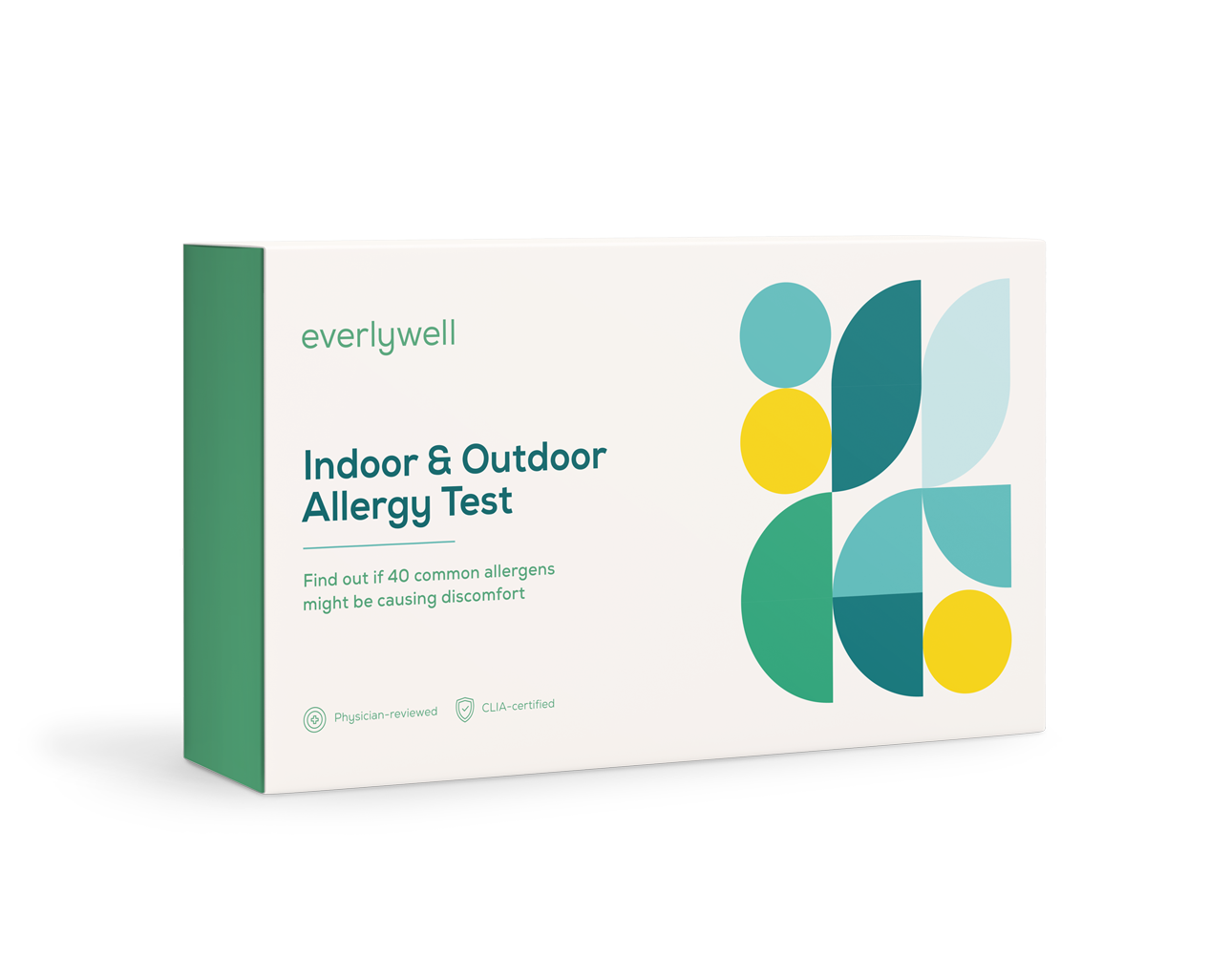Indoor & Outdoor Allergy Test
$199
Free Shipping • FSA / HSA accepted

Become an Everlywell+ member instead!
Save up to 57% on regular prices with a monthly credit towards any available test, starting at only $39/month.
Not sure what’s causing your uncomfortable symptoms like an itchy throat, watery eyes, and sneezing? Test your immune response to indoor and outdoor allergens, including pets, trees, grasses, dust mites, and more with this simple at-home lab test.
IgE reactivity to
Full List of Allergens
Grasses (7)
- Bermuda Grass
- Rye Grass
- Sweet Vernal Grass
- Orchard Grass
- Timothy Grass
- Kentucky Bluegrass
- Johnson Grass
Trees (14)
- Box Elder
- Birch Tree
- Beech Tree
- Oak Tree
- Elm Tree
- Olive Tree
- Walnut Tree
- Plane Tree
- Poplar Tree
- Acacia Tree
- Mulberry Tree
- Willow Tree
- White Pine
- White Ash
Weeds (9)
- Common Ragweed
- Mugwort
- English Plantain
- Goosefoot
- Russian Thistle
- Rough Pigweed
- Sagebrush
- Sorrel
- Nettle
Mold (4)
- Mold (P. nota)
- Mold (C. herb)
- Mold (A. fumi)
- Mold (A. alte)
Pet Allergens (2)
- Dog Dander
- Cat Dander
Pests (2)
- German Cockroach
- Mouse Urine Proteins
Dust Mites (2)
- Dust mite (D. fari)
- Dust mite (D. pter)
Finger prick sample collection
Indoor & Outdoor Allergy Test
$199
Free Shipping • FSA / HSA accepted

Become an Everlywell+ member instead!
Save up to 57% on regular prices with a monthly credit towards any available test, starting at only $39/month.
Not sure what’s causing your uncomfortable symptoms like an itchy throat, watery eyes, and sneezing? Test your immune response to indoor and outdoor allergens, including pets, trees, grasses, dust mites, and more with this simple at-home lab test.
IgE reactivity to
Full List of Allergens
Grasses (7)
- Bermuda Grass
- Rye Grass
- Sweet Vernal Grass
- Orchard Grass
- Timothy Grass
- Kentucky Bluegrass
- Johnson Grass
Trees (14)
- Box Elder
- Birch Tree
- Beech Tree
- Oak Tree
- Elm Tree
- Olive Tree
- Walnut Tree
- Plane Tree
- Poplar Tree
- Acacia Tree
- Mulberry Tree
- Willow Tree
- White Pine
- White Ash
Weeds (9)
- Common Ragweed
- Mugwort
- English Plantain
- Goosefoot
- Russian Thistle
- Rough Pigweed
- Sagebrush
- Sorrel
- Nettle
Mold (4)
- Mold (P. nota)
- Mold (C. herb)
- Mold (A. fumi)
- Mold (A. alte)
Pet Allergens (2)
- Dog Dander
- Cat Dander
Pests (2)
- German Cockroach
- Mouse Urine Proteins
Dust Mites (2)
- Dust mite (D. fari)
- Dust mite (D. pter)
Finger prick sample collection
Questions?
Would you like to order this test?
Shipping Address
,


